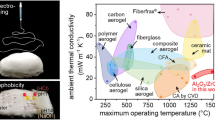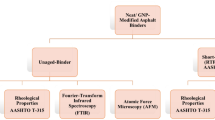Abstract
The aluminum-water system is a promising propellant due to high energy and low signal characteristics, and the gel form is easier to store and utilize. In this work, hydrogels of water and aluminum particles were prepared using the low-molecular-weight gellant agarose. The various physical properties of gel systems, including the water loss rate, phase transition temperature, and centrifugal stability at different gellant and aluminum contents, were examined. Rheological properties were assessed through shear thinning tests, thixotropy tests, strain sweep analysis, and frequency sweep experiments. The microstructure of the gel was obtained through scanning electron microscopy images. The results show that the aluminum-hydrogel network structure is composed of micron-scale aluminum and agarose nanosheets, and the unique micro-nanostructure endows the gel with excellent mechanical strength and thermal stability, which improve with increasing gellant and aluminum contents. Notably, the gel with 2% agarose and 20% aluminum had the best performance; the storage modulus reached 90647 Pa, which was within the linear viscoelastic region, and the maximum withstand pressure was 111.2 kPa, which was 118.8% greater than that of the pure hydrogel. Additionally, the gel demonstrates remarkable shear thinning behavior and can undergo gel-sol transformation upon shearing or heating to exceeding 114 °C.

Similar content being viewed by others
References
Huang Y L, Ye Z L, Wan X K, Yao G, Duan J Y, Liu J J, Yao M D, Sun X, Deng Z X, Shen K, et al. Systematic mining and evaluation of the sesquiterpene skeletons as high energy aviation fuel molecules. Advanced Science, 2023, 10(23): 2300889
Nie J R, Jia T H, Pan L, Zhang X W, Zou J J. Development of high-energy-density liquid aerospace fuel: a perspective. Transactions of Tianjin University, 2022, 28(1): 1–5
Tang P F, Yang B, Li R, Wang Y C, Li X D, Yang G C. Ti3C2 MXene: a reactive combustion catalyst for efficient burning rate control of ammonium perchlorate based solid propellant. Carbon, 2022, 186: 678–687
Cao J W, Zhang Y C, Pan L, Shi C X, Zhang X W, Zou J J. Synthesis and characterization of gelled high-density fuels with low-molecular mass gellant. Propellants Explosives Pyrotechnics, 2020, 45(7): 1018–1026
Lysien K, Stolarczyk A, Jarosz T. Solid propellant formulations: a review of recent progress and utilized components. Materials, 2021, 14(21): 6657
Shorunov S V, Zarezin D P, Samoilov V O, Rudakova M A, Borisov R S, Maximov A L, Bermeshev M V. Synthesis and properties of high-energy-density hydrocarbons based on 5-vinyl-2-norbornene. Fuel, 2021, 283: 118935
Moghaddam A S, Rezaei M R, Tavangar S. Experimental investigation of characteristic length influence on a combustion chamber performance with liquid and gelled UDMH/IRFNA bi-propellants. Propellants Explosives Pyrotechnics, 2019, 44(9): 1154–1159
Zou J J, Zhang X W, Pan L. High-Energy-Density Fuels for Advanced Propulsion: Design and Synthesis. Hoboken, New Jersey: Wiley, 2021
Jyoti B V S, Baek S W. Rheological characterization of ethanolamine gel propellants. Journal of Energetic Materials, 2016, 34(3): 260–278
Liu Y, Zhang H Z, Pan L, Xue K, Zhang X W, Zou J J. High-energy-density gelled fuels with high stability and shear thinning performance. Chinese Journal of Chemical Engineering, 2022, 43: 99–109
Natan B, Hasan D. Advances in gel propulsion. Journal of Energetic Materials, 2019, 18(4): 303–323
Cao J W, Pan L, Zhang X W, Zou J J. Physicochemical and rheological properties of Al/JP-10 gelled fuel. Chinese Journal of Energetic Materials, 2020, 28(5): 382–390 (in Chinese)
Xue K, Cao J W, Pan L, Zhang X W, Zou J J. Review on design, preparation and performance characterization of gelled fuels for advanced propulsion. Frontiers of Chemical Science and Engineering, 2022, 16(6): 819–837
Han L K, Wang R D, Chen W Y, Wang Z, Zhu X Y, Huang T Z. Preparation and combustion mechanism of boron-based high-energy fuels. Catalysts, 2023, 13(2): 378
Glushkov D O, Paushkina K K, Pleshko A O, Yanovsky A O. Ignition and combustion behavior of gel fuel particles with metal and non-metal additives. Acta Astronautica, 2023, 202: 637–652
Yang D L, Xia Z X, Huang L Y, Ma L K, Chen B B, Feng Y C. Synthesis of metallized kerosene gel and its characterization for propulsion applications. Fuel, 2020, 262: 116684
Saberimoghaddam A, Emamifard Z, Mahdi Bahri Rasht Abadi M, Meyghani N. Investigation of the effective parameters on the preparation of the gelled IRFNA. Propellants Explosives Pyrotechnics, 2019, 44(12): 1621–1627
Rahimi S, Hasan D, Peretz A. Development of laboratory-scale gel-propulsion technology. Journal of Propulsion and Power, 2004, 20(1): 93–100
Wang F S, Chen J, Zhang T, Guan H S, Li H M. Experimental study on spray characteristics of ADN/water-based gel propellant with impinging jet injectors. Propellants, Explosives, Pyrotechnics, 2020, 45(9): 1357–1365
Padwal M B, Natan B, Mishra D P. Gel propellants. Progress in Energy and Combustion Science, 2021, 83: 100885
Guo X D, Li F S, Bian G Z, Liu G P. Coating treatment of Mg powders and their water reaction characteristics. Advanced Materials Research, 2013, 781–784: 2463–2470
Bergthorson J M, Yavor Y, Palecka J, Georges W, Soo M, Vickery J, Goroshin S, Frost D L, Higgins A J. Metal-water combustion for clean propulsion and power generation. Applied Energy, 2017, 186: 13–27
Ghedjatti I, Yuan S W, Wang H X. Energy generation from metal-water reaction for power systems, underwater and aerospace propulsion applications. In: 2019 16th International Bhurban Conference on Applied Sciences and Technology. New York: IEEE, 2019, 49–54
Nishii K, Mannami Y, Akiyama M, Murohara M, Hiroyuki K, Komurasaki K. Experimental study on bulk metal-water combustion for small spacecraft propulsion. In: AIAA Propulsion and Energy 2020 Forum. Reston, Virginia: AIAA, 2020, 3744
Boryaev A A. Calculation and experimental estimation of the efficiency of using lithium, sodium, magnesium, and aluminum as fuels in hydro-reactive propellants. Thermal Science and Engineering Progress, 2021, 23: 100881
Zou M, Yang R, Guo X, Cao C, Li J. Advances in aluminum/water propellants. Chinese Journal of Energetic Materials, 2007, 15(4): 421–424 (in Chinese)
Dong R K, Mei Z, Xu S Y, Zhao F Q, Ju X H, Ye C C. Molecular dynamics simulation on reaction and kinetics isotope effect of nano-aluminum and water. International Journal of Hydrogen Energy, 2019, 44(36): 19474–19483
Murugesan R, Chakravarthy S R, Kandasamy J, Sarathi R. Experimental investigation on aluminum-based water ramjet for propelling high-speed underwater vehicles. Journal of Propulsion and Power, 2023, 39(6): 886–895
Hahma A, Gany A, Palovuori K. Combustion of activated aluminum. Combustion and Flame, 2006, 145(3): 464–480
Huang H T, Zou M S, Guo X Y, Yang R J, Li Y K. Analysis of the aluminum reaction efficiency in a hydro-reactive fuel propellant used for a water ramjet. Combustion, Explosion, and Shock Waves, 2013, 49(5): 541–547
Gautham M G, Ramakrishna P A. Propulsive performance of mechanically activated aluminum-water gelled composite propellant. Journal of Propulsion and Power, 2020, 36(2): 294–301
Risha G A, Connell T L Jr, Yetter R A, Sundaram D S, Yang V. Combustion of frozen nanoaluminum and water mixtures. Journal of Propulsion and Power, 2014, 30(1): 133–142
Gautham M G, Ramakrishna P A. Combustion characteristics of aluminum-water gelled composite propellant. Journal of Propulsion and Power, 2018, 34(5): 1345–1354
Guo C, Li T, Zhao Y, Bao S, Zhang H, Wu R. Aluminum/water reaction mechanism of aluminum-based hydrogels. Chinese Journal of Energetic Materials, 2022, 30(6): 557–563 (in Chinese)
Nakayama A, Kakugo A, Gong J P, Osada Y, Takai M, Erata T, Kawano S. High mechanical strength double-network hydrogel with bacterial cellulose. Advanced Functional Materials, 2004, 14(11): 1124–1128
Li L C, Zheng R L, Huang Y, Sun R Q. Self-sorting assembly in multicomponent self-assembled low molecular weight hydrogels. Progress in Chemistry, 2023, 35(2): 274–286
Espinosa-Andrews H, Velasquez-Ordonez C, Cervantes-Uc J M, Rodriguez-Rodriguez R. Water behavior, thermal, structural, and viscoelastic properties of physically cross-linked chitosan hydrogels produced by NaHCO3 as a crosslinking agent. Journal of Materials Science, 2023, 58(13): 6025–6037
Yang H H, Zhao C C, Wang Y, Wang Y Y, Shi B F, Chen P F, Yan W. Progress in study on gel propellants and their rheological properties. Journal of Xi’an Jiaotong University, 2022, 56(5): 166–179 (in Chinese)
Horinaka J, Ogawa S. Cyclic deformation behavior of agarose hydrogels prepared at different gelation concentrations. International Journal of Biological Macromolecules, 2023, 248: 125904
Zheng J, Zhao C, Zhu L, Chen Q, Wang Q. One-pot synthesis of highly mechanical and recoverable double network hydrogels using thermoreversible sol-gel polysaccharide. Advanced Materials, 2013, 25(30): 4171–4176
Chen A Q, Guan X D, Li X M, Zhang B H, Zhang B, Song J. Preparation and characterization of metalized JP-10 gel propellants with excellent thixotropic performance. Propellants Explosives Pyrotechnics, 2017, 42(9): 1007–1013
Lin C, Li Y, Tang W, Zhou S, Rao X. Facile construction of bio-based supramolecular hydrogels from dehydroabietic acid with a tricyclic hydrophenanthrene skeleton and stabilized gel emulsions. Molecules, 2021, 26(21): 6526
Sang Y, Liu M. Nanoarchitectonics through supramolecular gelation: formation and switching of diverse nanostructures. Molecular Systems Design & Engineering, 2019, 4(1): 11–28
Zhang L M, Wu C X, Huang J Y, Peng X H, Chen P, Tang S Q. Synthesis and characterization of a degradable composite agarose/HA hydrogel. Carbohydrate Polymers, 2012, 88(4): 1445–1452
Liao J, Wang Y J, Hou B, Zhang J M, Huang H H. Nano-chitin reinforced agarose hydrogels: effects of nano-chitin addition and acidic gas-phase coagulation. Carbohydrate Polymers, 2023, 313: 120902
Wang S, Zhang R, Yang Y, Wu S, Cao Y, Lu A, Zhang L. Strength enhanced hydrogels constructed from agarose in alkali/urea aqueous solution and their application. Chemical Engineering Journal, 2018, 331: 177–184
Sarkar D, Mohapatra D, Ray S, Bhattacharyya S, Adak S, Mitra N. Nanostructured Al2O3-ZrO2 composite synthesized by sol-gel technique: powder processing and microstructure. Journal of Materials Science, 2007, 42(5): 1847–1855
Jo H S, Kim H, Yoon S Y. Synthesis and characterization of mesoporous aluminum silicate and its adsorption for Pb(II) ions and methylene blue in aqueous solution. Materials, 2022, 15(10): 3562
Cao Q, Feng F, Wu X S. Time and temperature dependent constitutive equations modeling of RP-1 jet fuel gel. Chinese Journal of Energetic Materials, 2016, 24(6): 592–598 (in Chinese)
Qiu X P, Pang A M, Jin F, Wei W, Chen K H, Lu T J. Preparation and characterization of JP-10 gel propellants with tris-urea low-molecular mass gelators. Propellants Explosives Pyrotechnics, 2016, 41(2): 212–216
Hu Y, Kim Y, Hong I, Kim M, Jung S. Fabrication of flexible pH-responsive agarose/succinoglycan hydrogels for controlled drug release. Polymers, 2021, 13(13): 2049
Jarosz A, Kapusta O, Gugala-Fekner D, Barczak M. Synthesis and characterization of agarose hydrogels for release of diclofenac sodium. Materials, 2023, 16(17): 6042
Dennis J D, Kubal T D, Campanella O, Son S F, Pourpoint T L. Rheological characterization of monomethyl hydrazine gels. Journal of Propulsion and Power, 2013, 29(2): 313–320
Acknowledgements
This work was supported by the Haihe Laboratory of Sustainable Chemical Transformations.
Author information
Authors and Affiliations
Corresponding authors
Ethics declarations
Competing interests The authors declare that they have no competing interests.
Rights and permissions
About this article
Cite this article
Guo, H., Li, H., Zhang, H. et al. Micro-nanoarchitectonic of aluminum-hydrogel propellant with static stability and dynamic rheology. Front. Chem. Sci. Eng. 18, 43 (2024). https://doi.org/10.1007/s11705-024-2404-6
Received:
Accepted:
Published:
DOI: https://doi.org/10.1007/s11705-024-2404-6




